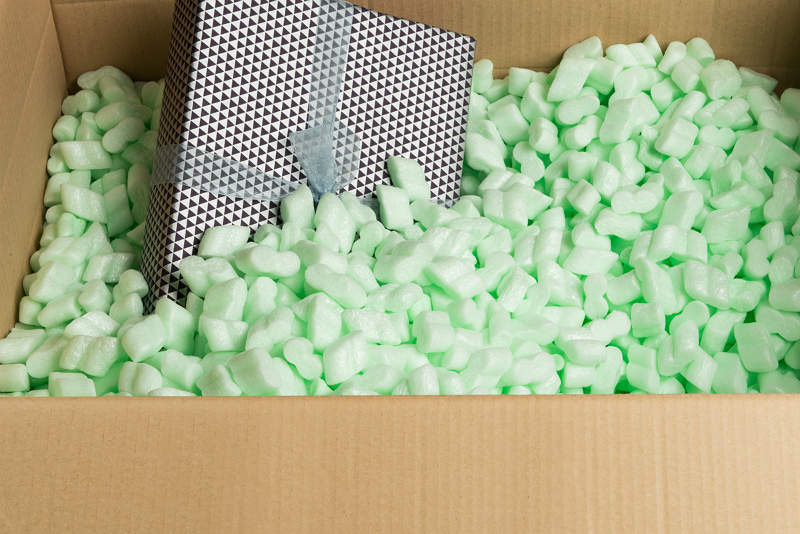
With ever-growing pressures on businesses to enhance end-user experience, whilst minimising overheads, maximising supply chain efficiencies and also reducing their carbon footprint, the packaging sector is constantly being called upon to pioneer new packaging products which tick all these boxes. Jason Poxon, packaging technologist at Antalis Packaging, finds out more.
In today’s fast-paced, e-commerce-driven retail environment, packaging plays a powerful role. Aside from protecting products, it’s an important marketing tool; often being the first thing a customer will see, it’s a way of conveying a brand’s essence.
The choice of packaging can also enhance overall business operations. Get it right and it can help to increase warehouse capacity, optimise lead-times and reduce costs, all while providing a better experience for customers.
However, with so many new packaging options now available on the market, finding the time to keep up-to-date with the latest trends may seem an impossible task. We discuss a few predictions about key emerging trends that savvy businesses should know about.
Polystyrene alternatives: more sustainable packaging solutions
As consumers become increasingly aware of the environmental consequences of excessive packaging, there will be a continued movement towards more sustainable packaging technologies.
A good example is a new alternative to polystyrene. As we all know, polystyrene remains a dirty word in the packaging sector – it’s bulky, difficult to dispose of and is not environmentally friendly. A number of cities including New York have banned its use for food packaging, with top chefs in London launching a campaign last summer to try and get the capital to follow suit. Launched as an alternative to polystyrene for food packaging, Food Mailer is an all corrugate 100% recyclable pack that performs to the same standards as polystyrene. It’s over ten times more space-efficient due to its flat pack structure and can be up-cycled by the consumer into a trendy box.
How well do you really know your competitors?
Access the most comprehensive Company Profiles on the market, powered by GlobalData. Save hours of research. Gain competitive edge.

Thank you!
Your download email will arrive shortly
Not ready to buy yet? Download a free sample
We are confident about the unique quality of our Company Profiles. However, we want you to make the most beneficial decision for your business, so we offer a free sample that you can download by submitting the below form
By GlobalDataDigital technologies: leaving a lasting impression
The packaging sector continues to experience big technological advances, particularly in the area of digital printing. Digital printers are now able to deliver like-for-like capabilities with litho printing by offering added capabilities like personalisation. Beautifully designed, personalised boxes leave a lasting impression on a customer, as do high-quality, digitally-printed designs.
Augmented reality is becoming more and more prominent in the packaging sector, particularly in retail. From Coca-Cola to L’Oréal, multiple brands are embracing the marketing benefits of smartphones with augmented/virtual reality revenue forecast to hit $120 billion worldwide by 2020. The future of retail packaging is interactive and responsive, and gives power to customers by enabling them, for example, to scan an image on food packaging with their smartphone to access full environmental and sourcing data, a video recipe, or a chance to enter an online competition to win prizes. The future could see everything from nutritional information to flat-packed furniture instructions delivered in this way.
Environmentally-friendly messaging: encouraging consumers to recycle
Statistics from the Department for Environment Food and Rural Affairs (DEFRA) show that 44.3% of household rubbish was recycled in 2015, which was down from 44.9% in 2014. Considering there’s a target for the UK to recycle at least 50% of household waste by 2020, it’s really important that more brands provide environmentally-friendly packaging or, even better, encourage end consumers to recycle more packaging.
Not only does this ensure a business is positively viewed as eco-conscious and planet-friendly, it also helps fight the war on packaging waste by encouraging others to have the same mind-set. Zara boxes promote that they’re made from recycled products as well as using the hashtag ‘#recycle’, actively encouraging customers to recycle the box once used. Expect to see more and more brands adopting this approach.
Bespoke box designs: standing out amongst the competition
Bespoke boxes that fit perfectly around the contents are likely to grow in popularity this year. Not only do they deliver space-saving benefits and waste reduction, they also help better protect the item that’s inside. Some of the most creative bespoke box products are those that have been designed to have an afterlife as a completely different purpose such as a desk tidy or a food tray, for example, instead of being thrown away after use. These innovative products prove that bespoke box packaging designs can be created to fit any requirement.
If businesses want to set themselves apart from their competitors, all whilst delivering that wow factor to their customers and operating responsibly from an environmental point of view, businesses can no longer consider packaging as an afterthought. With the packaging sector churning out a wealth of innovations, it is vital for businesses to stay abreast of the latest packaging trends, embrace the new, and take that bold step to revitalise their supply chain operations.



